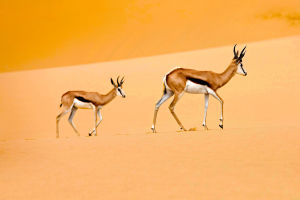In the mountain forests of North America, the grizzly bear commands reverence.
They are imposing in size, formidable in strength, and pivotal ecosystem members.
However, beyond their conspicuous traits lie numerous intriguing facts that often elude common knowledge—this article endeavours to offer a glimpse into the remarkable world of these majestic creatures.
1. Grizzly Bears: Surprisingly Selective Eaters
Grizzly bears, a subspecies of brown bears native to North America, have the strength to feast on various prey, including moose, elk, and bison. Despite their predatory reputation, they exhibit dietary versatility, incorporating nuts, berries, fruits, and leaves into their meals.
2. Hibernation: Not Universally Embraced by Grizzly Bears
While many associate grizzly bears with hibernation, not all individuals of this species engage in this seasonal behaviour. Some grizzly bears opt for activity during the frigid winter months, particularly in warmer regions such as parts of the western United States.
3. Grizzly Bears: Masters of Olfaction
Grizzly bears boast an extraordinary sense of smell, likened to a high-performance olfactory organ. Their olfactory prowess spans several miles, facilitating the detection of food sources and companions with remarkable ease.
4. Adept Anglers: Grizzly Bears' Fishing Prowess
Despite their primarily herbivorous diet, grizzly bears display remarkable fishing skills. During the fishing season, they adeptly position themselves along riverbanks, patiently awaiting the arrival of fish schools before swiftly employing their claws to secure a catch.
5. Male Grizzly Bears and Cub Predation
In certain instances, male grizzly bears may exhibit aggression towards cubs, particularly when mating with a female bear. Such behavior threatens the cubs' safety, prompting maternal efforts to shield them from harm.
6. Moths: A Culinary Delight for Grizzly Bears
Among various insects, moths are special in the grizzly bear's palate. Observations reveal their willingness to ascend into the alpine highlands of Montana's Glacier National Park to indulge in these airborne delicacies, consuming over 40,000 moths during 14-hour feeding sessions.
7. A Land Speed Champion: Grizzly Bears Outpace Bolt
Contrary to their lumbering appearance, grizzly bears possess remarkable agility, capable of running at speeds of up to 35 mph and sustaining velocities of 28 mph over a two-mile stretch—outrunning even the famed Olympian Usain Bolt in short sprints.
8. Interbreeding with Polar Bears: An Unusual Phenomenon
Rarely have sightings of hybrid "grizzlies" been reported in regions where grizzly and polar bear habitats intersect. These individuals are characterized by large heads and light-coloured fur, resulting from interspecies mating—a phenomenon possibly exacerbated by climate change-induced habitat shifts.
9. Arboreal Abilities: Grizzly Bears Can Climb Trees
Dispelling the myth of their arboreal incapacity, grizzly bears exhibit limited tree-climbing capabilities, utilizing their weight and elongated claws to ascend, albeit relying on sturdy branches for support.
10. The Plight of Grizzly Bear Populations
Once widespread across North America, grizzly bear populations face significant decline due to habitat destruction, hunting, and human encroachment. Urgent conservation efforts are imperative to mitigate these threats and safeguard ecological balance and biodiversity.
In the mountain forests of North America, grizzly bears stand as indispensable constituents of the ecosystem. By unravelling these captivating facts, we foster a deeper appreciation for their lives and ecological significance, thereby advocating for their conservation and coexistence.


